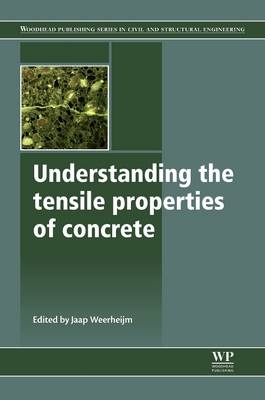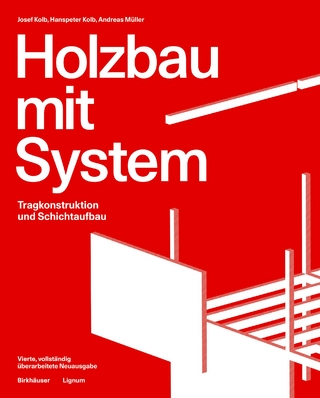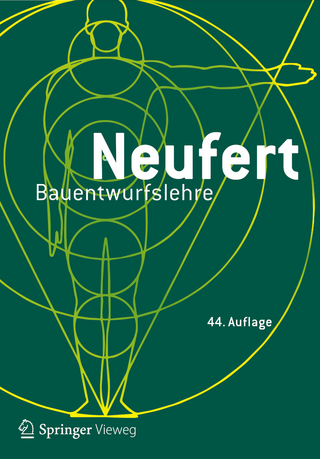
Understanding the Tensile Properties of Concrete
Woodhead Publishing Ltd (Verlag)
978-0-08-101572-8 (ISBN)
- Titel erscheint in neuer Auflage
- Artikel merken
After an introduction to concrete, the book is divided into two parts: part one on static response and part two on dynamic response. Part one starts with a summary chapter on the most important parameters that affect the tensile response of concrete. Chapters show how multi scale modelling is used to relate concrete composition to tensile properties. Part two focuses on dynamic response and starts with an introduction to the different regimes of dynamic loading, ranging from the low frequency loading by wind or earthquakes up to the extreme dynamic conditions due to explosions and ballistic impacts. Following chapters review dynamic testing techniques and devices that deal with the various regimes of dynamic loading. Later chapters highlight the dynamic behaviour of concrete from different viewpoints, and the book ends with a chapter on practical examples of how detailed knowledge on tensile properties is used by engineers in structural applications.
Drawing on the work of some of the leading experts in the field, Understanding the tensile properties of concrete is a valuable reference for civil and structural engineers as well as those researching this important material.
Dr Jaap Weerheijm works in the Faculty of Civil Engineering at the TNO and Delft University of Technology, The Netherlands. He is also a Senior Research Scientist at TNO. He is well-known for his research in such areas as the impact behaviour of structures and materials.
Contributor contact details
Woodhead Publishing Series in Civil and Structural Engineering
Preface
Chapter 1: Introduction to concrete: a resilient material system
Abstract:
1.1 Introduction
1.2 Concrete structure at the micro-scale: the cement matrix
1.3 Concrete structure at the meso-scale: bond cement matrix and aggregates
1.4 Concrete structure and mechanical properties
Chapter 2: Factors affecting the tensile properties of concrete
Abstract:
2.1 Introduction
2.2 Effect of composition
2.3 Effect of curing and moisture
2.4 Effect of temperature
2.5 Influence of specimen size
2.6 Effect of age
2.7 Effect of load duration
2.8 Effect of cyclic loading
2.9 Effect of type of loading
2.10 Crack development at the meso-scale
2.11 The relationship between tensile strength and compressive strength
2.12 The practical implications of laboratory tests
Chapter 3: Modelling the effect of material composition on the tensile properties of concrete
Abstract:
3.1 Introduction
3.2 Modelling damage in concrete
3.3 Behaviour of concrete beams under three-point bending conditions
3.4 Behaviour of concrete elements under uniaxial tension
3.5 Conclusions
3.6 Acknowledgements
Chapter 4: Modelling moisture transport in intact and fractured concrete
Abstract:
4.1 Introduction
4.2 Modelling moisture transport in intact concrete
4.3 Modelling moisture transport in degraded concrete
4.4 Interaction between moisture transport and material behaviour
4.5 Case study: application of outside render to masonry walls
4.6 Summary and future trends
Chapter 5: Modelling the response of concrete structures to dynamic loading
Abstract:
5.1 Introduction: dynamic loading regimes affecting concrete structures
5.2 Earthquake loading and impact deflection: inertia effects
5.3 Blast response: rate-dependent strength
5.4 Projectile impact loading: compressibility and high triaxial stresses
5.5 Contact detonations and explosive formed projectiles (EFPs): shock and release properties
5.6 Concluding remarks
Chapter 6: Dynamic test devices for analyzing the tensile properties of concrete
Abstract:
6.1 Introduction
6.2 Different experimental methods to characterize the tensile response of concrete
6.3 Characterizing the tensile strength and fracture energy of concrete at intermediate loading rates ( or )
6.4 Characterizing the tensile strength and fracture energy of concrete at high loading rates ( or )
6.5 Characterizing the tensile strength of concrete at very high loading rates ( or )
6.6 Edge-on impact tests performed on concrete
6.7 Conclusions
Chapter 7: Response mechanisms of concrete under impulsive tensile loading
Abstract:
7.1 Introduction: concrete response mechanisms under impulsive tensile loading
7.2 The effect of cracking rates on the tensile strength of concrete
7.3 The effect of cracking rates on the fracture process under moderate and high loading regimes
7.4 Conclusions
Chapter 8: Modelling the dynamic response of concrete with mesoscopic heterogeneity
Abstract:
8.1 Introduction
8.2 The mesoscopic structure of concrete and computational considerations
8.3 Types of mesoscale model and their applications in the dynamic analysis of concrete
8.4 A comprehensive mesoscale continuum model for the dynamic analysis of concrete
8.5 A pseudo-3D (sandwich) mesoscale model for the dynamic analysis of concrete in compression
8.6 Mesoscale modelling of the tensile behaviour of concrete in dynamic splitting (Brazilian) tension
8.7 Modelling of heterogeneity in concrete with stochastic material properties
8.8 Modelling of spalling and fragmentation in concrete structures with a stochastic material property distribution
8.9 Conclusions
8.10 Acknowledgements
Chapter 9: Mesoscopic modeling of concrete under different moisture conditions and loading rates
Abstract:
9.1 Introduction
9.2 Constitutive modeling of concrete
9.3 Mesoscopic modeling of concrete
9.4 The Split Hopkinson Bar test
9.5 Modified Split Hopkinson Bar test
9.6 Summary and conclusions
9.7 Acknowledgments
9.9 Appendix A: computation of the homogenized material tensor for different saturation levels
Chapter 10: Modelling the response of concrete structures from strain rate effects to shock induced loading
Abstract:
10.1 Introduction to the modelling of loading-rate effects on concrete
10.2 Measuring the strain-rate dependent strength of concrete
10.3 Modelling shock-induced tensile loading of concrete structures
10.4 Summary
Chapter 11: Understanding the dynamic response of concrete to loading: practical examples
Abstract:
11.1 Introduction
11.2 Impact, penetration and perforation
11.3 Contact detonation
11.4 Blast
11.5 Residual load-bearing capacity of damaged structural elements
11.6 Behaviour of reinforced-concrete beams under localized static and impact loads
11.7 Project examples: improving blast resistance
11.8 Conclusions
11.9 Acknowledgements
Index
| Erscheinungsdatum | 07.07.2016 |
|---|---|
| Reihe/Serie | Woodhead Publishing Series in Civil and Structural Engineering |
| Verlagsort | Cambridge |
| Sprache | englisch |
| Themenwelt | Technik ► Architektur |
| Technik ► Bauwesen | |
| Technik ► Maschinenbau | |
| ISBN-10 | 0-08-101572-0 / 0081015720 |
| ISBN-13 | 978-0-08-101572-8 / 9780081015728 |
| Zustand | Neuware |
| Haben Sie eine Frage zum Produkt? |
aus dem Bereich



